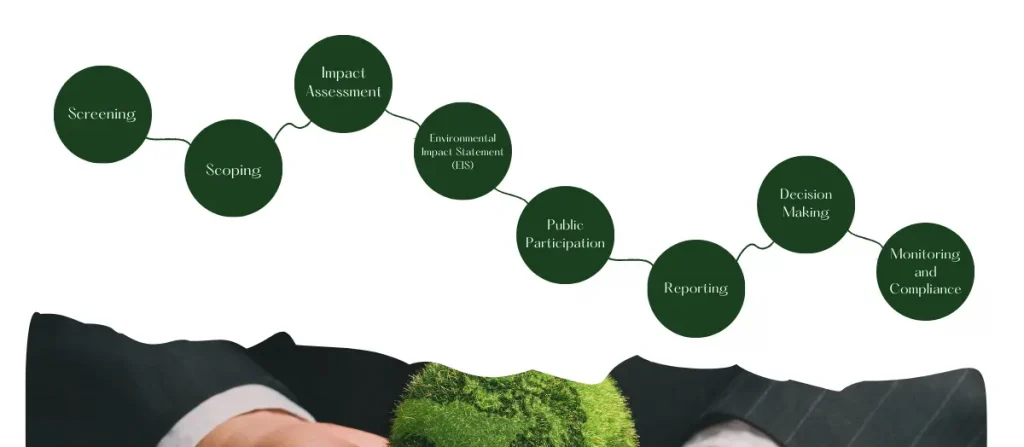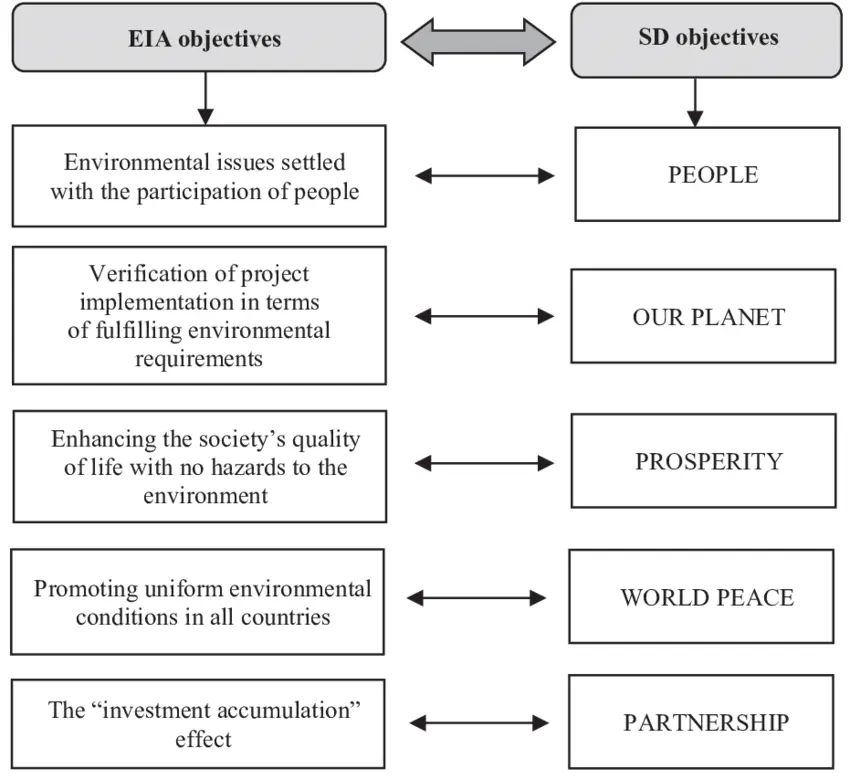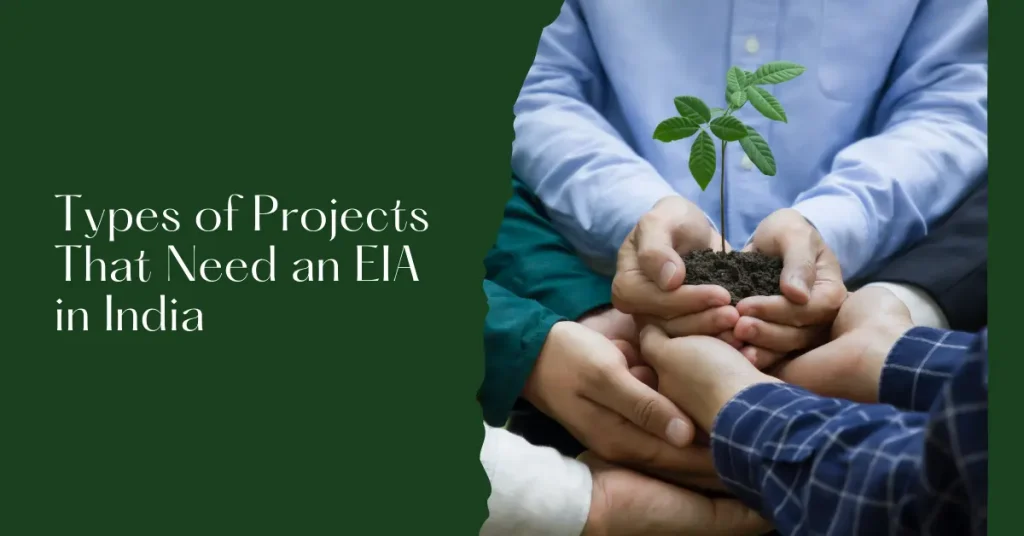
- All articles
Environmental Impact Assessment (EIA): Meaning, Process, and Case Studies
By Ketul
Updated 08 Sep, 2024
10 min read

Contents
Balancing development and protecting the environment is crucial. Environmental Impact Assessment (EIA) helps us do just that. It’s a process used to evaluate the potential effects of a project before it starts.
EIA looks at how a project might impact the environment, from changes to local ecosystems to effects on nearby communities. It helps identify possible problems and suggests ways to avoid or reduce them.
By using Environmental Impact Assessment (EIA), we can make better decisions that consider both progress and preservation. This blog will start with the history of EIA and will go on to how EIA works, why it matters, case studies, and its role in sustainable development. Let’s explore how this process helps protect our planet while allowing for growth.
Environmental Impact Assessment (EIA) in India
EIA in India began in the 1970s amid growing environmental concerns. The Bhopal gas tragedy in 1984 highlighted the need for stricter environmental regulations, leading to the Environment (Protection) Act in 1986.
The first official EIA Notification came in 1994, requiring certain projects to undergo EIA before approval. In 2006, the notification was revised, introducing categories for projects and improving the assessment process.
In 2020, proposed amendments sparked public controversy over concerns of weakened environmental safeguards. Despite challenges, EIA remains a vital tool for balancing development with environmental protection in India.
The Environmental Impact Assessment (EIA) Process

The Environmental Impact Assessment (EIA) process is designed to identify and address the potential environmental effects of a project. This ensures that development proceeds in a way that minimizes harm to the environment. Here’s a detailed look at each step in the EIA process:
1. Screening
The very first step of the EIA process is Screening. Its main goal is to determine whether a project requires an EIA. Not all projects need a full assessment; some might be too small or have minimal impact.
How is it done?
Some projects are automatically required to undergo an EIA due to their size or nature, like large industrial facilities or major infrastructure works. For other projects, the local or national environmental authority decides if an EIA is needed based on the project’s potential impacts.
2. Scoping
Scoping defines the scope of the EIA. It identifies which environmental issues are most important and need to be studied in detail.
How is it done?
Scoping can be done by consulting experts, stakeholders, and the public to identify key environmental concerns. There can be such significant issues e.g., air quality, wildlife, water resources, etc. These issues will be studied deeply.
3. Impact Assessment
Impact analysis in the EIA process assesses the potential effects of the project on the environment. This includes both positive and negative impacts.
How is it done?
Gather data on how the project will affect various environmental aspects. Then use tools and models to predict impacts, such as air and water quality models. Make sure to determine the significance of these impacts, including short-term and long-term effects.
4. Mitigation
Mitigation involves the strategies and such actions taken to reduce or manage negative environmental impacts found during the assessment.
How is it done?
Mitigation can be done in three actions. First, the types of project designs that harm the environment should be avoided. The second action is to minimize the impact of using advanced technologies. And, the third most important action includes, affected areas should be restored or new habitats should be created to offset losses.
5. Public Participation
Public participation involves engaging with the community and other stakeholders to gather their input on the project.
How is it done?
Do hold meetings or hearings to discuss the project and its potential impacts. Then collect and consider feedback from residents, local groups, and other interested parties. Use this feedback to refine the project and address concerns raised by the community.
6. Reporting
Reporting involves compiling all the findings from the EIA into a document known as the Environmental Impact Statement (EIS).
How is it done?
Write the EIS, detailing the project’s potential impacts, proposed mitigation measures, and how public input was addressed. The EIS is reviewed by regulatory authorities and made available to the public for further comments.
7. Decision Making
Decision-making in EIA is the process where authorities decide whether to approve, modify, or reject the project based on the EIS.
How is it done?
Authorities review the EIS and consider all the information provided. They make a decision on whether the project can proceed and under what conditions. The project is either approved with conditions, modified to address concerns, or rejected if it is deemed too harmful.
8. Monitoring and Compliance
Monitoring ensures that the project follows the approved plans and mitigation measures. Compliance checks that environmental standards are being met.
How is it done?
Conduct regular inspections and monitoring to ensure compliance with environmental regulations. And document the actual impacts and how they compare with predictions. Make adjustments to the project or mitigation measures as needed to address any unforeseen issues.
Why EIA Matters?
Environmental Impact Assessments (EIAs) are pivotal in fostering sustainable development and protecting our environment. But the question is why EIA matters?
EIA helps identify and avoid potential environmental issues by assessing the impacts of a proposed project. This proactive approach can prevent problems like air and water pollution, habitat loss, and noise pollution.
It can reduce the severity of environmental impacts. Although it may not be possible to eliminate all effects, EIA provides recommendations to lessen their impact, such as adopting cleaner technologies or implementing noise reduction measures.
And lastly, EIA offers a platform for public involvement in decision-making. It allows the public to provide input on the environmental impacts of a project and suggest mitigation measures, ensuring a transparent and accountable decision-making process.
EIA’s Role in Sustainable Development

Environmental Impact Assessment (EIA) plays a crucial role in promoting sustainable development by systematically evaluating the environmental consequences of proposed projects before they are approved. Here’s how EIA contributes to sustainable development:
1. Identifying Environmental Impacts:
EIA helps in identifying potential negative and positive environmental impacts of projects. By understanding these impacts early, stakeholders can make informed decisions that balance development needs with environmental protection.
2. Promoting Environmental Protection:
By assessing potential impacts, EIA encourages the adoption of measures to prevent, minimize, or mitigate adverse environmental effects. This ensures that projects are designed and implemented in a way that reduces harm to ecosystems and natural resources.
3. Enhancing Decision-Making:
Environmental impact assessment provides decision-makers with comprehensive information about the environmental consequences of a project. This allows for more informed and balanced decision-making, considering both economic benefits and environmental costs.
4. Encouraging Sustainable Practices:
Through the EIA process, projects are often required to incorporate sustainable practices and technologies. This may include measures for energy efficiency, waste reduction, and resource conservation, contributing to the overall sustainability of the project.
5. Fostering Public Participation:
EIA processes often involve public consultations and stakeholder engagement. This ensures that the views and concerns of the community are considered, leading to projects that are more socially acceptable and environmentally responsible.
6. Supporting Long-Term Environmental Management:
EIA helps in developing plans for monitoring and managing environmental impacts throughout a project’s lifecycle. This long-term perspective supports ongoing sustainability by ensuring that environmental protection measures are maintained and adjusted as needed.
7. Contributing to Regulatory Compliance:
EIA ensures that projects comply with environmental regulations and standards. This helps in achieving legal and environmental requirements, contributing to the overall goal of sustainable development.
8. Facilitating Integrated Planning:
EIA integrates environmental considerations into the planning and design stages of projects. This holistic approach ensures that environmental impacts are considered alongside economic and social factors, leading to more sustainable outcomes.
Types of Projects That Need an EIA in India

In India, the Environmental Impact Assessment (EIA) is a mandatory process designed to evaluate and mitigate the potential environmental impacts of various projects before they begin. The specific projects that require an EIA are outlined in the Environmental Impact Assessment Notification, 2006, and include:
- Mining Projects
- Industrial Projects
- Thermal Power Projects
- River Valley, Multipurpose, Irrigation, and Hydroelectric Projects
- Infrastructure Development and Miscellaneous Projects
- Nuclear Power Projects
However, the EIA Rules categorize projects into two types based on their size and environmental impact:
- Category A projects involve large-scale activities with significant environmental effects. These projects require approval from the Central Government, specifically the Ministry of Environment, Forests and Climate change, following recommendations from an Expert Appraisal Committee (EAC). Examples include major infrastructure like harbors and airports, nuclear power plants, and large-scale industrial operations such as steel and copper production.
- Category B projects are smaller in scale but still need assessment. They require approval from the State EIA, guided by a State Expert Appraisal Committee (SEAC) established under the EIA Notification 2006. This category includes smaller industrial developments and infrastructure projects.
Case Studies

1. POSCO Steel Plant Project
The $12 billion POSCO steel project in Odisha, India, launched in 2005, was one of the largest investments in the country. However, it faced significant controversies and POSCO withdrew in 2017. The impact assessment (IA) for the project was criticized for failing to address the complex local livelihoods and dissent, with weak stakeholder consultations and inadequate reporting on negative impacts and potential losses. Questions were raised about the legitimacy and comprehensiveness of the IA, which was deemed insufficient for addressing critical societal and project-related issues.
Impact Assessment Reports:
The Rapid EIA by M. N. Dastur & Company only addresses the first phase (4 MTPA) of a 12 MTPA ( Million Tones Per Annum ) project. It was criticized for incomplete assessments, poor fieldwork, and neglecting broader environmental and social impacts, including community concerns.
2. Social Cost Benefit Analysis (CBA):
The Social Cost Benefit Analysis (CBA) by NCAER aimed to evaluate the economic benefits of the project. However, it was criticized for overestimating these benefits and not considering local livelihood impacts. Additionally, there was an issue with undisclosed POSCO sponsorship, raising concerns about potential conflicts of interest.
3. Socio-Economic Assessments:
Reports from the Tata Institute of Social Sciences (TISS) and Xavier Institute of Management focused on displacement and rehabilitation but were not publicly available, limiting their impact on public discourse.
4. Consultation Processes
Public consultation processes were problematic, with hearings held far from the project site and criticized for inadequate local involvement and excessive police presence. This limited the effectiveness of stakeholder engagement.
5. Regulatory Compliance:
Regulatory compliance was questioned as the MOEF granted initial clearance in December 2009 but imposed additional conditions in January 2010. The process was criticized for relying on an incomplete EIA and not fully addressing stakeholder concerns, raising doubts about the thoroughness of the review.
2. Sardar Sarovar Project
The Sardar Sarovar Project (SSP) is the most extensively studied water project in developing countries, especially regarding social and environmental impacts. The river Narmada and its tributaries form a complex system, making the Environmental Impact Assessments (EIA) challenging due to unpredictable interactions. The project’s success relied on how well government agencies, NGOs, academics, the public, and policymakers work together.
Impact Assessment Reports:
The report concluded that both the Indian government and the World Bank Group were at fault for the project’s failures, leading the Bank Group to cancel the remaining loan in 1993. Other EIA reports on the Sardar Sarovar Project include:
- No Canceling Tomorrow: A 1992 report by the World Bank’s Independent Review Mission critiquing the project.
- Environmental Changes Downstream of Sardar Sarovar Dam: A 1993 report by HR Wallingford, submitted to SSNNL in Gandhinagar, India.
- Environmental Assessment of Changes Downstream of Sardar Sarovar Dam: A 1995 report by HR Wallingford, also submitted to SSNNL in Gandhinagar, India.
FAQs
1. What is the environmental impact assessment?
Environmental Impact Assessment (EIA) is a process used to evaluate the potential environmental effects of a proposed project before it is carried out.
2. What are the 7 steps of EIA?
The seven steps of the Environmental Impact Assessment process are:
- Screening: Determines whether a project requires an EIA based on its size and potential impacts.
- Scoping: Identifies the key issues and impacts to be assessed in the EIA.
- Impact Assessment: Evaluates the potential positive and negative impacts of the project on the environment.
- Environmental Impact Statement (EIS): Compiles the findings of the impact assessment into a detailed report.
- Public Participation: Engages stakeholders and the public to gather feedback and address concerns.
- Reporting: Finalizes the EIS and submits it for review by regulatory authorities.
- Decision-Making: Authorities review the EIS and decide whether to approve, modify, or reject the project.
3. What is the environmental impact assessment statement?
An Environmental Impact Assessment Statement (EIS) is a detailed document that presents the findings of the EIA process. It outlines the potential environmental impacts of a project, the methods used to assess these impacts, and proposed measures to mitigate any negative effects.
4. What is the environmental assessment in simple words?
Environmental assessment evaluates how a proposed project might impact nature, air, water, and local communities before it starts. Its goal is to identify and address potential problems to protect the environment while supporting responsible development.
Related articles


Go Do Good: The Story of a Sustainable Packaging Revolution
